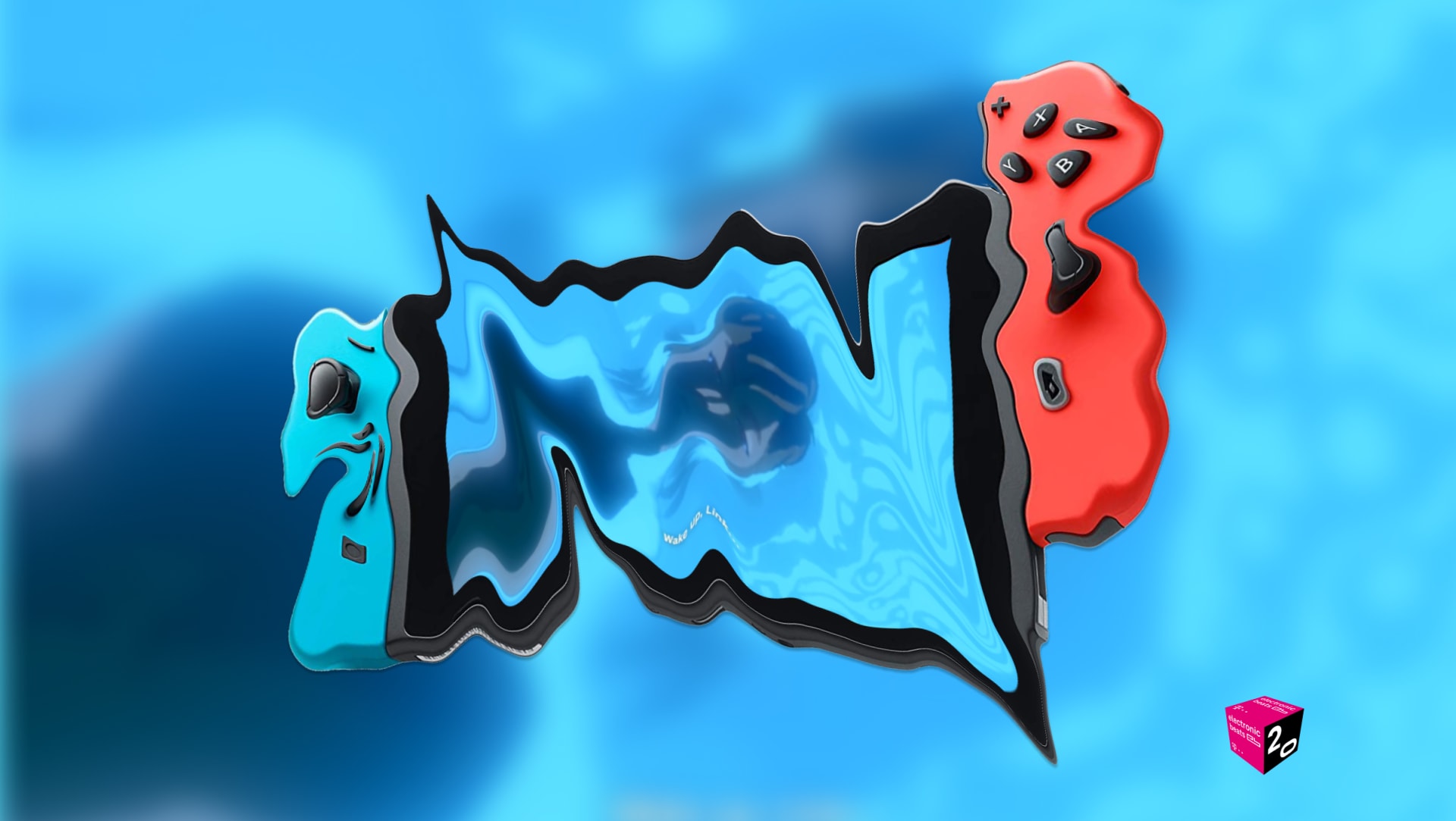

The Evolution of Music in Video Games
Tracing the history of escapist ambient sounds within complex digital worlds.
Games are to the 21st century what cinema, pop, and TV were to the 20th century—the most important and most innovative entertainment medium of our time. Music has always played an integral role in video games. At first, the possibilities of expression were technically limited. Today, however, games have become one of the most complex platforms for artists, composers, and music fans to experience music. In this excerpt from the forthcoming Electronic Beats book, Günseli Yalcinkaya discusses the development using Nintendo classics like The Legend of Zelda and Animal Crossing, uncovering parallels between ambient music, Kankyō Ongaku, and conscious virtual escapism in times of existential fear.
“It’s dangerous to go alone! Take this.” Ever since this cryptic message flickered through pixelated tubes in Nintendo’s role-playing game The Legend of Zelda in 1986, video games and their soundtracks have guided us into new worlds. From the acoustically synthesized winks at the choice menu to the booming rhythms of the “Overworld”—Zelda composer Koji Kondo created otherworldly sounds with the help of rudimentary chip technology that whisked players from their living room sofas to distant, magical worlds teeming with forest labyrinths, collapsing castles, and the mountains of death. Kondo’s deceptively simple melodies guide players through leafy terrain as if with an invisible master’s hand and are so catchy that they can be hummed along for days, if not years.
Game designer and producer Shigeru Miyamoto infused the game with nods to his own childhood memories—his explorations of the landscape around his hometown Sonobe with all the hills and lakes laid the foundation for what many associate with video games today. At this stage, the basic parameters for video game design still had to be defined, and many aesthetic principles were in their infancy. Miyamoto’s vision of a mythical pre-modern Japan took shape in a primitive 8-bit landscape: made up of blocky meadows, two-dimensional dungeons, and pixelated portals. This distant world looked like an alternative to the concrete and steel deserts that dominated Japan’s cities.
This element will show content from various video platforms.
If you load this Content, you accept cookies from external Media.
Seen this way, The Legend of Zelda, with its futuristic melodies, was a glimpse of freedom, far from the daily grind of long commuter routes and coldly lit supermarket aisles after work. Simultaneously, Japanese musicians were creating a new sound for hotel lobbies, public spaces, art galleries, and Muji shops. Kankyō Ongaku (which loosely translates to “environmental music”) was influenced by the unobtrusive melodies in Erik Satie’s “Musique d’ameuble” (interior music) as well as “Music for Airports”, Brian Eno’s ambient manifesto. It was a pressing sonic answer to the country’s rapid economic boom—sound designers created ambient soundscapes to help reduce stress while people went for walks in the cities—in other words, through urban reality.
This music aimed to relax—and with a series of new music technologies such as the electronic LinnDrum, Roland’s MC-4 sequencer, the Prophet-5 synthesizer, and early samplers, these artists created subtle yet lofty sounds that consciously positioned themselves in relation to the constructed urban environment. In his compositions, Kondo utilized chips, programming code, and cartridges from Nintendo Systems themselves, but at this time, consoles were not yet able to reproduce “natural” sounds. Insufficient memory, archaic sound chip technologies, and many other restrictions were constant companions during the composition process. The sound design was limited to standard oscillators with the usual waveforms—square, sawtooth, triangle, sparse amplitude, frequency modulation, and basic filters. Anyone who wanted to produce a video game soundtrack in a more opulent or complex manner usually had to negotiate with the programming team, since more sound effects might mean trade-offs in developing the game like fewer characters or graphic details. Koji Kondo understood that Nintendo gaming systems’ synthetic sounds could hardly reproduce a “real” world. So he created something entirely from scratch, adding the possibility of rudimentary synthesis with melodies that were inspired by Gregorian chants, Hollywood, folk, classics of the 20th century, and medieval troubadours, the hypnotizing result of which manifested in disorienting melodies that were able to show and capture the vastness of the fantasy world Hyrule and the adventurous expeditions of Link, the game’s protagonist.
'The Legend of Zelda,' with its futuristic melodies, was a glimpse of freedom, far from the daily grind of long commuter routes and coldly lit supermarket aisles after work.
Of course, technology kept improving, and game studios began to create ever-changing worlds. The scores also benefited from this development. With the advent of 32-bit and the CD, the era of sound chips ended in the nineties. The limitations that made music so difficult for video games were now a thing of the past. Composers could create complete soundtracks made up of complex tracks with numerous variations set up to trigger a player’s response to every subtle change in the virtual environment.
Meanwhile, the soundtracks and sound effects, far removed from the blocky, clumsy tones of the Nintendo Entertainment System, became more varied and encompassed genres such as classical music, techno, jazz, and much more. When e-sports games like FIFA and open-world games like Grand Theft Auto emerged, they implemented these changes right away. Hits by Billie Eilish, Childish Gambino, Peggy Gou, Kojey Radical, and Hans Zimmer were licensed for the games blurring the boundaries between the gaming world and the real world even further. The soundtracks of video games, like those of films, became haunting and sophisticated, and often offered powerful listening experiences in and of themselves.
In the early 2000s, ambient video games that allowed forms of meditation and self-appreciation became increasingly popular. Elements like water, earth, and air influenced video game soundtracks to both animate and relax players in their exploration of virtual, often mystical and well-meaning, friendly worlds. Later games such as “The Legend of Zelda: Breath of the Wild” (2018) and “Animal Crossing: New Horizons” (2020) offered moments of catharsis apart from the fast pace that we associate with modernity. The “soft focus” sounds, which shift slowly and subtly, are elementary, just like the natural phenomena they emulate acoustically and can slow down the breath and the heartbeat.
New Horizons, the zany reboot of Nintendo’s 2001 original simulation game Animal Crossing, a video game about nothing other than a blissful world inhabited by anthropomorphic animals, is innately relaxing. Players can spend an infinite amount of time carefully constructing their very own island utopia, and its whimsy soundtrack—peppered with chipper birdsong, crackling campfires, and lapping ocean tides—is built to reflect this. Composed by Nintendo’s Kazumi Totaka and Shinobu Nagata, the masterminds behind the music for the entire Animal Crossing series, as well as games like Luigi’s Mansion and Mario Kart, the music is a playful, leisurely romp that plods down your ear canals and loops from one track to another as naturally as the waves on the shore. Importantly, the music isn’t there to stand out but rather enhance the inconsequential beat of daily life. The 24-hour soundtrack is built to cater to the subtle changes in the environment, like “4 AM”, a slow-paced acoustic jam, which—set to the beat of a single maraca—perfectly evokes the stillness of pre-dawn, while “3 PM” embodies the tropical mid-noon limbo with feather-light ukulele and parping trumpets. In this sense, the video game soundtrack is not much different than functional ambient recorded for art galleries, airports, or hotels. Additionally, these time-specific tracks sync up to the respective seasons in the game. When winter comes, sleigh bells ring out in the game background. When it rains, bells chime in—Autumn ushers in the rustle of crunching leaves.
Although it is unclear why these relaxing sounds linger so strongly, there are eery parallels between the flood of newly invasive technologies introduced in Japan in the eighties and the technological advances we are subject to today. Between the never-ending flood of information on social media, the grueling gig economy, neoliberal fears, and a global pandemic, it is not surprising that stressed millennials choose the ambiance. Escapism is seductive when the alternatives are insecurity and existential fear. In his book “Hearing the Cloud: Can Music Help Reimagine The Future?” Emile Frankel examines the idea of a sound utopia as a space of ideological embodiment.
With reference to the Marxist cultural theorist Fredric Jameson, he says: “Utopias have something to do with failure and tell us more about our own limits and weaknesses than about future societies.” Through music, we can step into new worlds and withdraw from the neo-capitalist pressure to be optimized actors with flourishing social lives, innovative sideline activities, stunning charisma, and buzzing social media accounts. These patterns appear across popular culture in the romantic notions that underlie trends like cottage core and memes like I’m baby. This pop-cultural “return to innocence” is used to express and free oneself from the hectic pace and the constant attention of our digitally overstimulated lifestyles. The permanent networking in our everyday life has resulted in our resting places being pushed even further out of the physical area into the virtual space. The internet and social media’s invasive nature has further blurred the line between IRL and URL, meaning that what was once “personal” and salutary is now public and potentially threatening.







Through music, we can step into new worlds and withdraw from the neo-capitalist pressure to be optimized actors with flourishing social lives, innovative sideline activities, stunning charisma, and buzzing social media accounts.
Paradoxically, it is precisely because of these invasive technologies that we are looking for other possibilities. Paul Roquet traces this cultural change in “Ambient Media / Japanese Atmospheres of the Self” and makes connections to Nikolas Rose’s work. According to Roquet, this movement can be understood as at once internal “psychological understanding of the self,” which leads to an outwardly directed “somatic self.” Rose postulates the disturbing shift from a self that was once characterized by its inwardness and unconsciousness to one shaped by the externalized notions of identity of neoliberalism. “Music’s exchange and value has thus shifted from a tapping into the interiority of our once limited selves, to become a tapping into our potential selves,” says Frankel. “All music now incurs the added possibility to be heard and asked to transform any space and any mindset.”
Thanks to advances in virtual and augmented reality, which are further blurring the lines between reality and digitization, games are hyper immersive, packed with opulent graphics and high-fidelity sound. The games’ scope has also increased—open-world games and generative games, which enable players to simulate a whole universe with infinite potential (via an algorithm), allow endless possibilities of adapting our own moods to the experiences gathered in the gaming world. This makes composing for a game less of straight linearity than much more of a cobweb. The conscious decoupling from sociopolitical events at a time when it is crucial to remain switched on and socially active raises many questions. However, the emotional power that video games carry endures—even after switching off the consoles.
Günseli Yalcinkaya is a writer based in London.
The Electronic Beats book is out on March 15th. You can pre-order a copy via Do you read me ?!
Published January 26, 2021. Words by Günseli Yalcinkaya.












Follow @electronicbeats